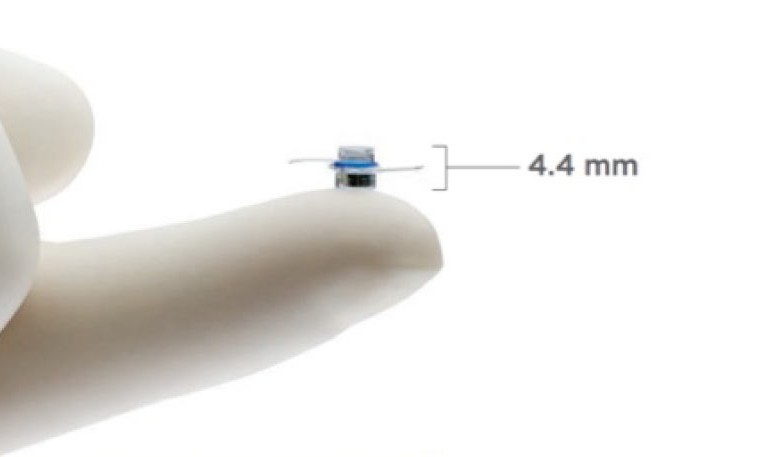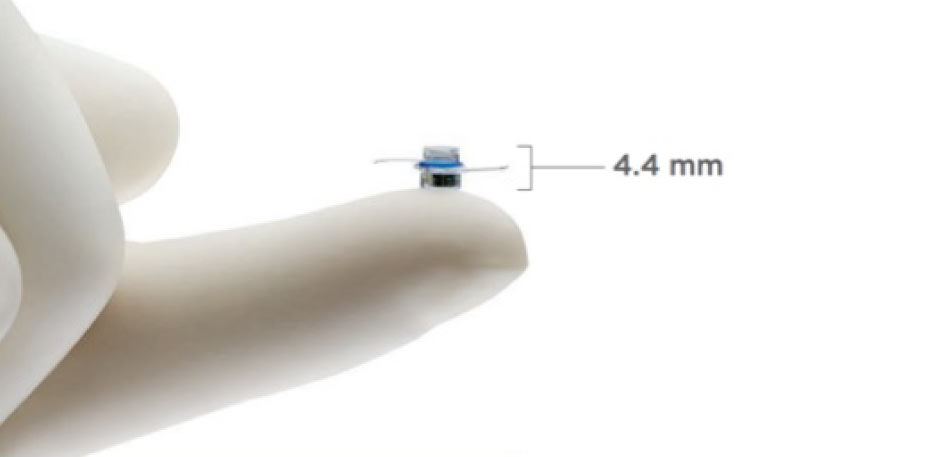Age-related macular degeneration (ARMD) is the third most common cause of blindness worldwide. Treatment options for ARMD are not only limited, but are aimed primarily at decreasing the rate of vision loss, as little can be done to restore vision that has already been lost. Individuals with macular degeneration suffer from blindness in the most important area of our visual field, the very center of our vision. An innovative technology, known as the VisionCare Implantable Miniature Telescope, is doing what no ARMD treatment has done before, improving previously lost central vision using the intraocular implantation of an item with which most are already familiar – the telescope.
Invented by Dr. Isaac Lipshitz, the miniature telescope is the world’s smallest telescope and is implanted in almost the exact location of the eye’s natural lens. To understand the benefit of the telescope in macular degeneration, we must first understand that the macula is the area of the retina responsible for viewing objects in the center of our vision. Individuals with macular degeneration are unable to see objects clearly in their central vision as the macula is diseased, but are still able to see objects in their peripheral vision, due to projection of objects in peripheral vision onto the still-healthy areas of the retina. As you can see in the image below, the benefit of the implantable miniature telescope is in magnifying the otherwise-blurry or completely-absent image onto a greater area of the retina, thus allowing the image to be projected onto the healthy areas of the retina normally used for peripheral vision. Following the telescope implant procedure, the eye with the telescope is primarily used for central and near vision, while the eye without the telescope is used for peripheral vision. The brain has a marvelous way of adapting to this new way of seeing the world, in much the same way as a patient who undergoes LASIK may have “monovision,” where one eye is corrected for distance vision and the other eye is corrected for reading vision.
The implantable miniature telescope was approved by the FDA in 2010, and was just recently implanted for the first time in Utah by Dr. Majid Moshirfar at the Moran Eye Center in Salt Lake City (see story here). The operation itself only takes about an hour, and is quite similar to cataract extraction and intraocular lens placement, though only fellowship-trained cornea surgeons are currently approved to perform the procedure. (Click here to see a video of the intraocular miniature telescope implantation and here for a video overview of this new technology.) In discussing the telescope implant procedure recently performed for the first time in Utah, Dr. Moshirfar said, “Until now, we’ve had very few options to offer our patients with end-stage ARMD. This telescope implant offers patients new hope. It allows them to do everyday things we take for granted like seeing their grandchildren or watching TV.”
As you can see, tremendous potential benefit exists for the implantable eye telescope in individuals suffering from severe age-related macular degeneration. The greatest barrier to widespread telescope implantation, however, is the strict criteria which must be met to be eligible for the procedure. Possibly the most potentially-limiting screening requirement is that individuals must be at least age 75 and must have evidence of visually significant cataract (≥ Grade 2). With improved surgical and intraocular lens technologies, many individuals have already had their cataracts removed before age 75, often before they have even begun to develop central vision loss due to macular degeneration, thus prohibiting them from undergoing the telescope implantation procedure. Potential surgical candidates must also meet the following criteria:
- retinal findings of geographic atrophy or disciform scar with foveal involvement in both eyes, as determined by fluorescein angiography, but without evidence of active or recent treatment for choroidal neovascularization
- achieve at least a 5-letter improvement on the ETDRS chart with an external telescope and have adequate peripheral vision in the eye not scheduled for surgery
- no history of prior eye surgery, diabetic retinopathy, retinal detachment, nearsightedness >6.0 D, farsightedness >4.0 D, corneal dystrophies, or other eye conditions (click here for full list of screening requirements)
While clearly not yet a worldwide solution to age-related macular degeneration, this new technology represents a new treatment paradigm in this debilitating disease, combining principles of low-vision magnification and intraocular surgery to circumvent the retinal damage in this severe and debilitating form of blindness.













